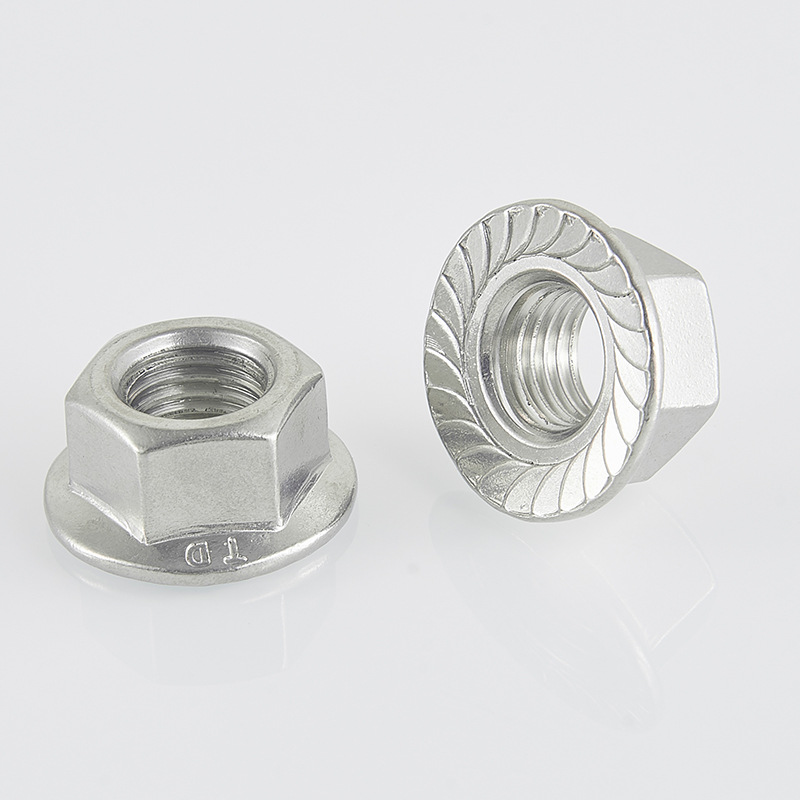

metric flange nuts
Nov . 03, 2024 14:28 Back to list
metric flange nuts
Understanding Metric Flange Nuts Essential Components for Secure Fastening
In the domain of mechanical engineering and construction, the importance of choosing the right fasteners cannot be overstated. Among various fasteners available, metric flange nuts are gaining popularity due to their distinct advantages. These specialized nuts are designed with an integrated flange that, when applied correctly, can enhance the overall strength and stability of bolted joints.
What are Metric Flange Nuts?
Metric flange nuts differ from standard nuts in that they feature a wider, circular, often hexagonal flange at one end. This flange serves several important functions. Primarily, it acts to distribute the load over a wider surface area, minimizing the risk of damage to the parts being fastened. This is particularly beneficial when dealing with softer materials that could be prone to deformation under traditional nuts.
Advantages of Using Metric Flange Nuts
1. Improved Load Distribution As mentioned, the flange design allows for effective load distribution. This reduces the possibility of loosening due to vibrations and shocks, creating a more reliable fastening solution.
2. Lower Profile Metric flange nuts typically have a lower height compared to regular nuts. This can be advantageous in applications where space is limited. The reduced height can also contribute to a cleaner aesthetic, especially in visible applications.
metric flange nuts

3. Self-Aligning Properties When installed, the flange design helps in self-aligning the nut with the corresponding bolt. This can enhance the efficiency of the assembly process and make it easier to achieve proper torque specifications.
4. Resistance to Corrosion Many metric flange nuts are available in materials such as stainless steel or treated alloys, which minimize corrosion. This characteristic is crucial in applications exposed to moisture or harsh environments.
Applications of Metric Flange Nuts
Metric flange nuts are widely used in various industries, including automotive, aerospace, and construction. They are ideal for applications requiring enhanced stability and strength, such as machinery assembly, structural framing, and vehicle manufacturing. Their reliable performance under dynamic loads makes them an integral choice for engineers and designers.
Conclusion
In summary, metric flange nuts represent a superior fastening solution that combines strength, reliability, and ease of use. With their unique design, they enhance the performance of bolted joints while accommodating a variety of applications. For anyone involved in design or assembly work, understanding the benefits and applications of metric flange nuts is essential for achieving secure and durable connections. By choosing the appropriate fasteners, engineers can ensure longevity and performance in their projects, ultimately leading to successful outcomes in their respective fields.
Latest news
-
High-Strength Hot Dip Galvanized Bolts - Hebei Longze | Corrosion Resistance, Customization
NewsJul.30,2025
-
Hot Dip Galvanized Bolts-Hebei Longze|Corrosion Resistance&High Strength
NewsJul.30,2025
-
High-Strength Hot-Dip Galvanized Bolts-Hebei Longze|Corrosion Resistance&High Strength
NewsJul.30,2025
-
Hot Dip Galvanized Bolts-Hebei Longze|Corrosion Resistance&High Strength
NewsJul.30,2025
-
Hot Dip Galvanized Bolts - Hebei Longze | Corrosion Resistance, High Strength
NewsJul.30,2025
-
High-Strength Hot Dip Galvanized Bolts-Hebei Longze|Corrosion Resistance, Grade 8.8
NewsJul.30,2025

